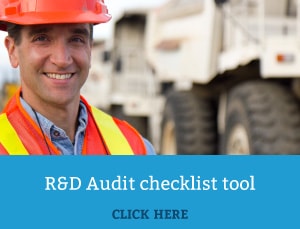Architecture
December 18th, 2014
This case study exemplifies the application of essential legislative requirements for eligible R&D activities as they apply to relevant activities in the architecture industry.
Business Scenario
Freeman Home Builders (Freeman) is a custom home construction company involved in designing, constructing and managing home builds from conception to delivery.
In 2012, Freeman identified that the inefficiencies that occurred during the building process were a result of poor industry practices, which were manual, resource-intensive and poorly organized.
Freeman saw a need for a new, all-encompassing software that could handle all aspects of its business instead of the existing market technology that focused strictly on design. Freeman formulated a hypothesis for its new R&D project:
“A management system can be designed and developed to manage all aspects of a building project by integrating the functions of design, customer relationship management (CRM) and accounting software.”
Freeman projected its R&D project would be ongoing for four years. The company believed its new management software (FMS) could be achieved by implementing four key R&D activities.
Freeman’s Core R&D Activities
Design and development of a series of prototypes to achieve the technical objectives (design of FMS).This core activity focused on whether a management system could be designed and developed to manage all aspects of a building project by integrating the functions of design, CRM and accounting software.
After cycles of coding, testing and re-coding, Freeman was able to prove the theoretical feasibility of developing FMS.
Trials and analysis of data to achieve results that can be reproduced to a satisfactory standard and to test the hypothesis (prototype development and testing of FMS).The hypothesis for this core activity was to prove that theoretical conclusions from the design phase could be realised through development and testing of FMS, and conclude that a management system could be designed and developed to manage all aspects of a building project.
Commentary
Identifying Core R&D Activities There are two types of core R&D activities:- Experimental activities whose outcome can not be determined in advance on the basis of current knowledge, information or experience, but can only be known by exercising a systematic progression of work that follows the principles of established science, proceeding from hypothesis to experiment, observation and evaluation, and lead to logical conclusions.
- Experimental activities that are conducted for the purpose of creating new knowledge.
If the outcome of an activity can be obtained without a hypothesis, then the activity will not be considered R&D.
Freeman’s Supporting R&D Activities
Background research to evaluate current knowledge gaps and determine feasibility (background research for the design of FMS).Freeman engaged in background research for three years which included the following activities:
- Literature search and review
- Consultation with industry professionals and potential customers to determine the level of interest and commercial feasibility of such a project
- Preliminary equipment and resources review with respect to capacity, performance and suitability for the project
- Consultation with key component/part/assembly suppliers to determine the factors they considered important in the design and to gain an understanding of how the design needed to be structured accordingly
These specific background research activities were directly related to Freeman’s core R&D activities because they assisted in identifying the key elements of the research project, therefore qualifying as supporting R&D activities.
Ongoing analysis of customer or user feedback to improve the prototype design (feedback R&D of FMS).This supporting R&D work included activities such as ongoing analysis and testing and continuous development and modification to interpret the experimental results.
These activities were necessary to evaluate the performance capabilities of the new design in the field and to improve any flaws in the design, thereby directly relating it to the core activities of the project.
Commentary
Identifying Supporting R&D Activities Activities that do not form part of the core experimental activities may still be eligible as supporting R&D activities. Supporting R&D activities are directly related to an eligible core R&D activity. They must have been performed for the primary purpose of supporting a qualified R&D activity.What records and specific documentation did Freeman keep?
To meet the R&D Tax Incentive requirements, Freeman had to save documents that outlined what it did in its core R&D activities, including experimental activities and documents to prove that the work took place in a systematic manner. Freeman saved the following documentation:
- Error log and fixes
- Conceptual sketches
- Technical drawing revisions
- Screenshots of various build versions / final version
- Email correspondence regarding progress of project
- Email correspondence with external developers regarding integration errors/issues
- Progress reports and meeting minutes
- Staff time sheets
- Tax invoices
- Patent application number
- Backup copies of the program and reports for each release
- Documentation of changes and source code in an online, private revision control system
This is an excellent example of how to be ‘compliance ready’ — meaning if you were selected for an audit by the ATO, you could present documentation to show the progression of your R&D activity.
Click here for the PDF version of this case study.
Categories
- ATO Guidance and Materials
- AusIndustry Guidance and Materials
- Case Law
- Federal Budget 2021
- Federal Budget 2022
- For Accountants
- General Information
- Government Policy and Treasury
- Industry Specific Issues
- Interpretative Decisions
- Legislation and Parliamentary Matters
- R&D Tax Credit
- R&D Tax Funding Strategies
- R&D Tax Loans
- Recent News
- Tax Determinations
Archives
- April 2024
- March 2024
- February 2024
- January 2024
- December 2023
- November 2023
- October 2023
- September 2023
- August 2023
- July 2023
- June 2023
- May 2023
- April 2023
- March 2023
- February 2023
- January 2023
- December 2022
- November 2022
- October 2022
- September 2022
- August 2022
- July 2022
- June 2022
- May 2022
- April 2022
- March 2022
- February 2022
- January 2022
- December 2021
- November 2021
- October 2021
- September 2021
- August 2021
- July 2021
- June 2021
- May 2021
- April 2021
- March 2021
- February 2021
- January 2021
- December 2020
- November 2020
- October 2020
- September 2020
- August 2020
- July 2020
- June 2020
- May 2020
- April 2020
- March 2020
- February 2020
- January 2020
- December 2019
- November 2019
- October 2019
- September 2019
- August 2019
- July 2019
- June 2019
- May 2019
- April 2019
- March 2019
- February 2019
- January 2019
- December 2018
- November 2018
- September 2018
- July 2018
- June 2018
- May 2018
- April 2018
- March 2018
- February 2018
- January 2018
- December 2017
- November 2017
- September 2017
- August 2017
- July 2017
- June 2017
- May 2017
- April 2017
- March 2017
- February 2017
- January 2017
- December 2016
- November 2016
- October 2016
- September 2016
- August 2016
- July 2016
- June 2016
- May 2016
- April 2016
- March 2016
- February 2016
- January 2016
- December 2015
- November 2015
- October 2015
- September 2015
- August 2015
- July 2015
- June 2015
- May 2015
- April 2015
- March 2015
- February 2015
- January 2015
- November 2014
- October 2014
- September 2014
- August 2014
- July 2014
- June 2014
- May 2014
- April 2014
- March 2014
- February 2014
- January 2014
- December 2013
- November 2013
- October 2013
- September 2013
- May 2013
- April 2013
- March 2013
- September 2012
- August 2012
- June 2012


 Free Call: 1300 009 390
Free Call: 1300 009 390





 News & Research
News & Research



